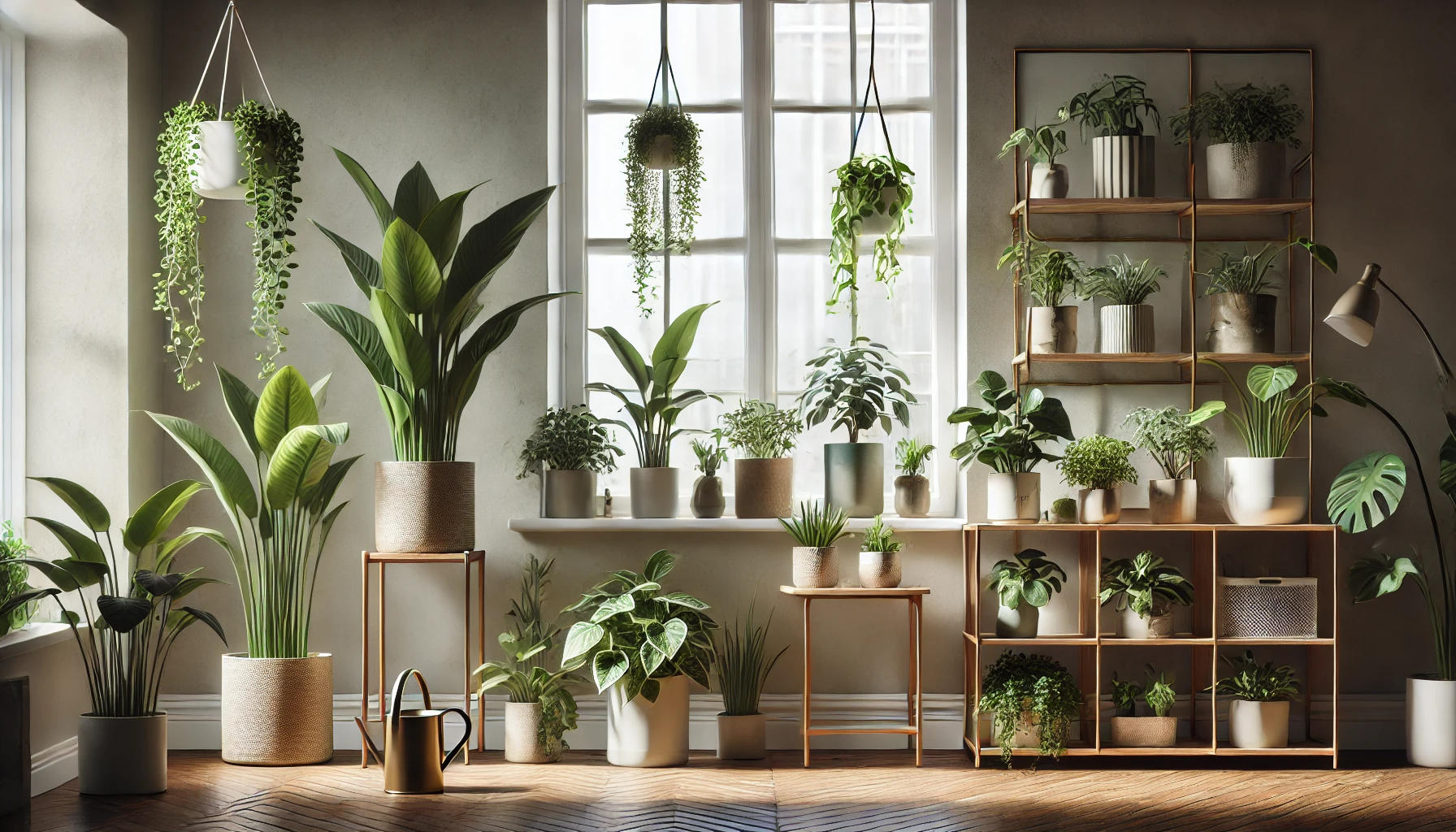Taking care of indoor plants might seem like a hobby reserved for green thumbs or people with a lot of time on their hands, but the truth is that anyone can create a thriving indoor garden with a bit of guidance. Whether you want to enhance the aesthetics of your home, improve air quality, or just feel the therapeutic joy of nurturing something living, this guide will walk you through the essentials of getting started with indoor plant care.
Why Have Indoor Plants?
Before diving into the “how”, it’s worth asking why. Indoor plants are more than just trendy décor items — they bring a wide range of benefits:
- Air purification: Many plants filter toxins and add oxygen to the air.
- Stress relief: Studies show that being around greenery can reduce anxiety and promote relaxation.
- Aesthetic value: They make spaces more vibrant and inviting.
- Educational and therapeutic: Caring for plants teaches responsibility and can be a meditative practice.
Choosing the Right Plants for Beginners
The key to starting successfully is choosing the right plants. Look for hardy varieties that are forgiving of beginner mistakes.
Here are a few ideal options:
- Snake Plant (Sansevieria) – Requires very little water and light.
- Pothos (Epipremnum aureum) – Grows quickly and thrives in various lighting conditions.
- Peace Lily (Spathiphyllum) – Alerts you when it needs water by drooping slightly.
- Spider Plant (Chlorophytum comosum) – Easy to care for and great at cleaning air.
These plants are not only resilient but also beautiful, making them perfect for new plant parents.
Understanding Light Needs
Light is one of the most crucial factors for plant health. But every plant has its own preferences:
- Low-light plants: Ideal for bathrooms or corners far from windows (e.g., Snake Plant, ZZ Plant).
- Medium-light plants: Need indirect sunlight, like near a north-facing window (e.g., Peace Lily).
- Bright-light plants: Require direct or strong indirect sunlight (e.g., Succulents, Cacti).
Tip: Use your phone’s compass app to find out which way your windows face. South-facing windows get the most sunlight in the Northern Hemisphere.
Watering: Less Is Often More
Overwatering is the number one cause of plant death. Most houseplants prefer to dry out slightly between waterings.
Watering tips:
- Stick your finger into the soil about 1–2 inches deep. If it feels dry, it’s time to water.
- Use pots with drainage holes to prevent root rot.
- Water in the morning when possible.
A common mistake is setting a fixed watering schedule. Instead, learn to read your plant’s signals and adjust according to humidity, season, and temperature.
Choosing the Right Pot and Soil
Your plant’s container and soil matter just as much as light and water. Here’s what to consider:
- Drainage: Always choose pots with drainage holes.
- Material: Terracotta is breathable but dries out quickly. Plastic holds moisture longer.
- Soil: Use specific mixes for each plant type — cacti/succulent mix for succulents, rich organic mix for foliage plants.
Avoid using regular garden soil indoors, as it can compact and suffocate roots.
Fertilizing Basics
Most indoor plants don’t need a lot of fertilizer, but occasional feeding during the growing season (spring and summer) helps.
- Use a balanced, water-soluble fertilizer diluted to half strength.
- Fertilize once a month during growing months.
- Skip fertilizing in fall and winter when growth naturally slows.
Too much fertilizer can burn the roots, so always err on the side of caution.
Cleaning and Maintenance
Indoor plants accumulate dust, especially on broad leaves. Dust can block sunlight and hinder photosynthesis.
Quick care tips:
- Wipe leaves gently with a damp cloth every few weeks.
- Remove any yellowing or dead leaves to prevent mold or pests.
- Rotate your plant every week to ensure even growth.
Regular attention helps your plant look its best and stay healthy.
Recognizing Signs of Trouble
Plants can’t speak, but they do show signs when something’s wrong. Here’s what to look for:
- Yellow leaves: Often a sign of overwatering.
- Brown tips: Could be due to low humidity or underwatering.
- Droopy leaves: Could mean either over or underwatering — check the soil.
- White crust on soil: Salt buildup from water or fertilizer; time to flush the soil.
Learning to “read” your plant’s signals comes with experience, so don’t get discouraged.
Setting Up Your Indoor Garden
Ready to set up your space? Follow these steps:
- Choose a spot with adequate light — near a window or under grow lights.
- Select 2–3 easy-care plants to begin with.
- Invest in basic tools: watering can, mister, pruning shears, and gloves.
- Use attractive pots that match your home style — your garden should be functional and beautiful.
- Add labels to remember plant names and care instructions.
Remember: start small. It’s better to master care for a few plants than struggle with many.
Final Thoughts: Growing Confidence Alongside Your Plants
Taking care of indoor plants is a journey of observation, adjustment, and patience. The more time you spend with your plants, the more confident you’ll become in understanding their needs.
Start slow, stay consistent, and let each plant teach you a little more about the art of nurturing. In time, your indoor space will blossom — and so will your skills.
